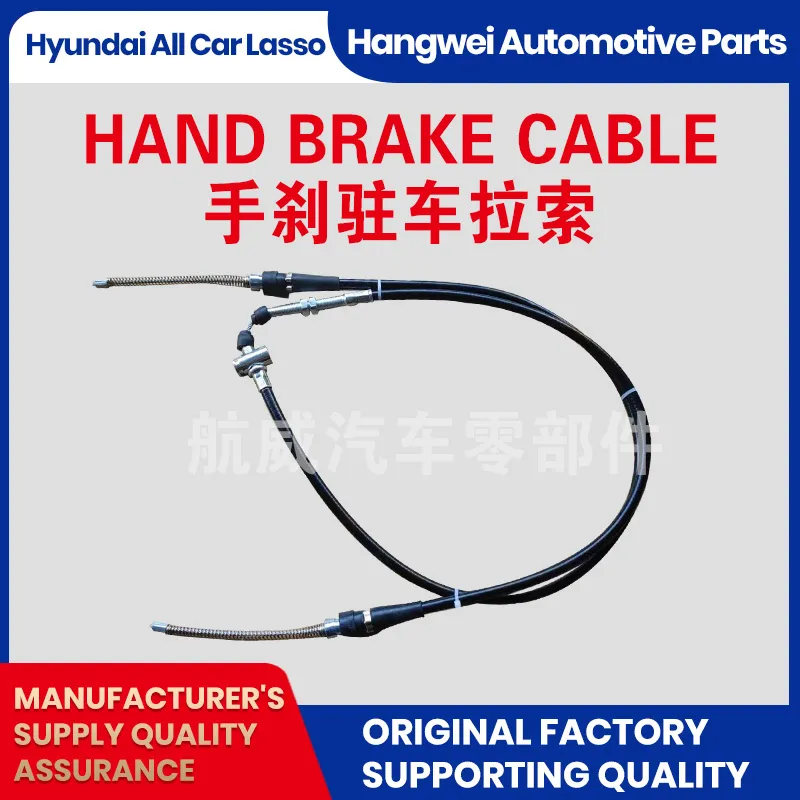carburetor choke cable
Understanding the Carburetor Choke Cable Function, Importance, and Maintenance
The carburetor choke cable is a vital component in many vehicle engines, particularly those that use carburetors for fuel delivery. While fuel injection systems have become the standard in modern automobiles, carbureted engines can still be found in classic cars, motorcycles, and small engines. Understanding how the choke cable works, its significance, and proper maintenance can ensure optimal performance and longevity of these engines.
What is a Carburetor?
To understand the choke cable's function, one must first understand the carburetor itself. A carburetor is a device that mixes air with a fine spray of liquid fuel. The efficiency of this mixture is crucial for the engine's performance. Carburetors operate based on the principle of air pressure and vacuum, allowing them to meter fuel into the air stream, ensuring the engine receives the correct mixture based on its operational needs.
The Role of the Choke
The choke is a mechanism within the carburetor that regulates the amount of air entering the engine during the starting process. When starting a cold engine, it is often necessary to enrich the fuel mixture to ensure proper combustion. The choke restricts air flow, creating a richer fuel mixture that allows the engine to start more easily in low temperatures.
Function of the Choke Cable
The choke cable connects the choke lever on the carburetor to the driver’s controls, typically located on the dashboard or near the steering column. When the driver pulls the choke cable, it physically moves the choke lever within the carburetor to close off some of the air supply, thereby enriching the fuel mixture. As the engine warms up, the driver will disengage the choke by releasing the cable, allowing more air into the mixture for optimal engine performance.
Importance of the Choke Cable
The choke cable plays a crucial role in cold starting a carbureted engine. Having a well-functioning choke cable ensures that the engine can start smoothly, especially in colder weather. A malfunctioning choke cable can lead to hard starts, stalling, and poor throttle response. Additionally, an improperly adjusted or sticking choke can lead to engine flooding, excessive fuel consumption, and increased emissions.
carburetor choke cable

Signs of a Faulty Choke Cable
It’s essential to recognize the symptoms of a failing choke cable. Common signs include difficulty in starting the engine, especially when cold, stalling shortly after starting, or an engine that runs rich (excess fuel) or lean (insufficient fuel). If you notice that the choke lever does not move smoothly or responds erratically, it may indicate that the cable is fraying or has become damaged.
Maintenance Tips
To ensure the choke cable functions correctly, regular maintenance is necessary. Here are some tips
1. Inspect Regularly Check the cable for signs of wear, fraying, or rust. A damaged cable should be replaced immediately to avoid further engine issues.
2. Lubrication Occasionally lubricate the cable with a suitable lubricant to prevent it from sticking or binding. This ensures smooth operation.
3. Adjustments If the choke does not properly engage or disengage, adjustment may be needed. Refer to the vehicle’s service manual for specific instructions.
4. Test the System After maintenance, test the choke functionality by cold starting the engine and observing its response.
Conclusion
The carburetor choke cable may seem like a small component, but its importance in starting and operating a carbureted engine is significant. Understanding its function and maintaining it properly can lead to more reliable engine performance, especially in challenging weather conditions. For enthusiasts and owners of classic vehicles, taking care of the choke cable can lead to a smoother and more enjoyable driving experience.
-
Workings of Clutch Pipe and Hose SystemsNewsJun.04,2025
-
The Inner Workings of Hand Brake Cable SystemsNewsJun.04,2025
-
The Secrets of Throttle and Accelerator CablesNewsJun.04,2025
-
The Hidden Lifeline of Your Transmission Gear Shift CablesNewsJun.04,2025
-
Demystifying Gear Cables and Shift LinkagesNewsJun.04,2025
-
Decoding Clutch Line Systems A Comprehensive GuideNewsJun.04,2025
